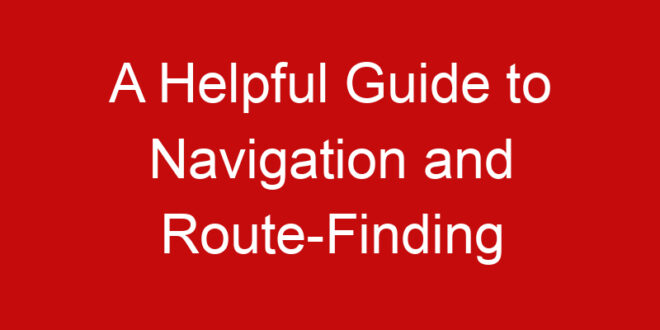Hello, dear readers! In this article, we will explore the world of navigation and route-finding applications. In today’s fast-paced world, getting from point A to point B efficiently and accurately is a top priority. Thankfully, with the advent of modern technology, we have access to a plethora of navigation apps that make our lives easier. Whether you’re a frequent traveler, a daily commuter, or simply someone who loves to explore new places, these apps will be your reliable companions in finding the best routes and navigating through unfamiliar territories.
1. Understanding Navigation Apps
Navigation apps are software applications designed to help users determine the most suitable and efficient route between two locations. They utilize various technologies, such as GPS and real-time traffic data, to offer turn-by-turn directions and assist users in reaching their destinations. These apps have become an integral part of our lives, and many of us heavily rely on them for our daily commutes and travels.
2. The Benefits of Navigation Apps
Navigation apps offer numerous benefits that traditional paper maps simply cannot match. First and foremost, they provide real-time data, ensuring that you receive accurate information about traffic conditions, road closures, and alternative routes. This real-time feature helps save time and prevents unnecessary frustration on the road. Additionally, most navigation apps offer voice-guided directions, allowing drivers to keep their hands on the wheel and eyes on the road, promoting safer driving practices.
3. Top Navigation Apps in the Market
There is a wide range of navigation apps available, each with its own unique features and strengths. Some of the top players in the market include:
– Google Maps: A user-friendly app with extensive mapping data and integration with other Google services.
– Waze: Known for its crowd-sourced traffic information and real-time updates from fellow users.
– Apple Maps: Comes pre-installed on iOS devices and has improved significantly in recent years.
– HERE WeGo: Offers offline maps and public transportation information for various cities.
– Sygic: Stands out with its robust offline navigation capabilities.
4. Key Features to Look for
When choosing a navigation app, certain features can greatly enhance your overall experience:
– Offline Maps: Ideal for travelers who may encounter areas with poor network coverage.
– Live Traffic Updates: To avoid congested routes and reduce travel time.
– Integration with Ride-Sharing Services: For seamless transitions between driving and public transportation.
– Points of Interest: To discover nearby restaurants, gas stations, and other essential stops.
– Multi-Platform Support: For access across various devices and operating systems.
5. Tips for Effective App Usage
While navigation apps are user-friendly, employing a few tips can maximize their effectiveness:
– Update Regularly: Keep your app and maps up to date for accurate directions.
– Enable Real-Time Updates: Allowing the app to access your location ensures the latest traffic information.
– Plan Ahead: Familiarize yourself with the route before starting your journey.
– Keep a Charger Handy: Navigation apps can be power-hungry, so keep your device charged during long trips.
6. Privacy and Security Considerations
While navigation apps offer convenience, it’s essential to be mindful of privacy and security concerns. Some apps collect user data, such as location history, for various purposes, including targeted advertising. Review the app’s privacy policy and adjust settings according to your comfort level. Moreover, avoid using navigation apps while walking or driving in hazardous areas to prevent accidents.
7. The Future of Navigation Apps
As technology continues to evolve, navigation apps will also see significant advancements. Artificial Intelligence (AI) is likely to play a more prominent role in predicting traffic patterns and suggesting optimized routes. Additionally, improved augmented reality (AR) integration may provide more intuitive and immersive navigation experiences, with digital overlays on the physical world.
8. Conclusion
In conclusion, navigation and route-finding apps have revolutionized the way we navigate our world. With real-time updates, voice-guided directions, and a plethora of useful features, these apps have become invaluable tools for modern-day travelers and commuters. When choosing a navigation app, consider your specific needs and preferences, such as offline maps or live traffic updates.
Hello, dear readers! In this article, we have explored the world of navigation and route-finding applications. We learned about their benefits, key features, and tips for effective usage. Remember to prioritize privacy and security while using these apps. As technology advances, navigation apps will undoubtedly become even more sophisticated, further enhancing our travel experiences. Until we meet again in another exciting article, safe travels and happy navigating!
